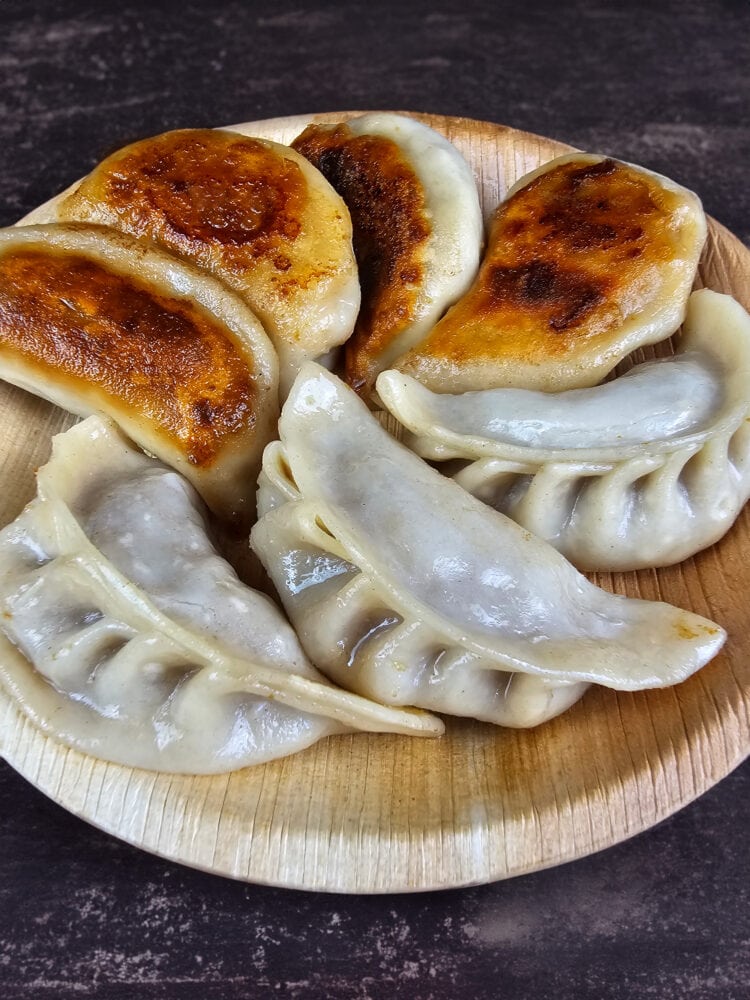These traditional Japanese dumplings, known as gyoza, are juicy and crispy yet wonderfully tender; their flavor will please even the most discerning palate
Ah, gyoza! Who can resist these bite sized Japanese dumplings that have taken the world by storm? Even if you are new to Asian cooking, you have probably tasted them or at least heard of these delicious morsels.
Origins of Gyoza
Gyoza originated not in Japan but in China, where they are called jiaozi. After crossing the sea, the dumplings were tweaked to match Japanese culinary preferences. While Chinese jiaozi are often richer and meatier (which I personally enjoy), gyoza were lightened to suit Japanese tastes.
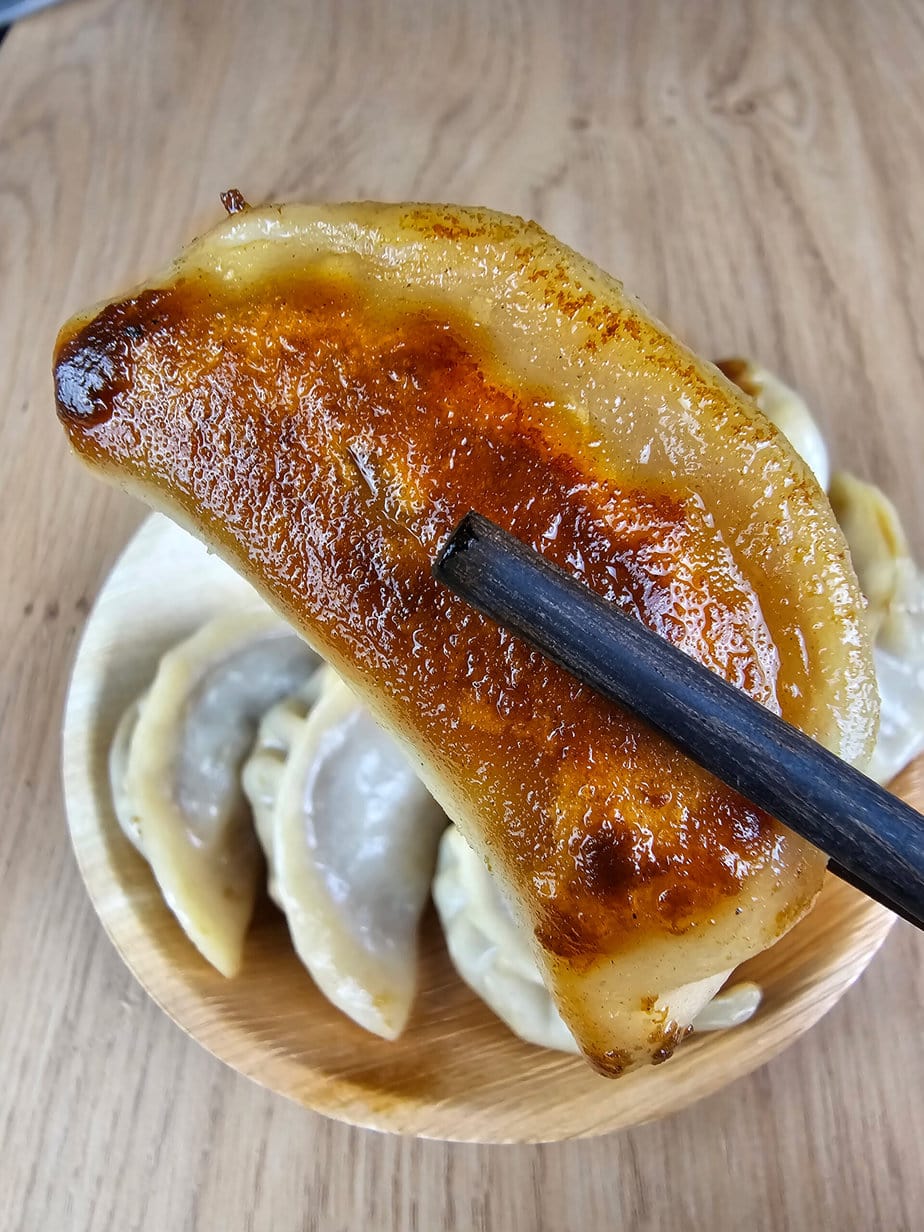
The Japanese Adaptation: A Balance Between Meat and Vegetables
Unlike their Chinese cousins, which are generally richer, Japanese gyoza strike a different balance between meat and vegetables.
This is not to say that jiaozi are any less delicious; it simply means that gyoza are a slightly lighter version tailored to Japanese tastes. Make no mistake – they are still incredibly tasty!
Gyoza have not only adapted to Japanese tastes; they have also branched out into countless variations. You will find chicken gyoza, beef gyoza, pork blended with shrimp, and even fully vegetarian options.
Today, however, we will focus on the most traditional and beloved variety: pork gyoza. And do not forget to whip up my gyoza dipping sauce; it is the perfect match
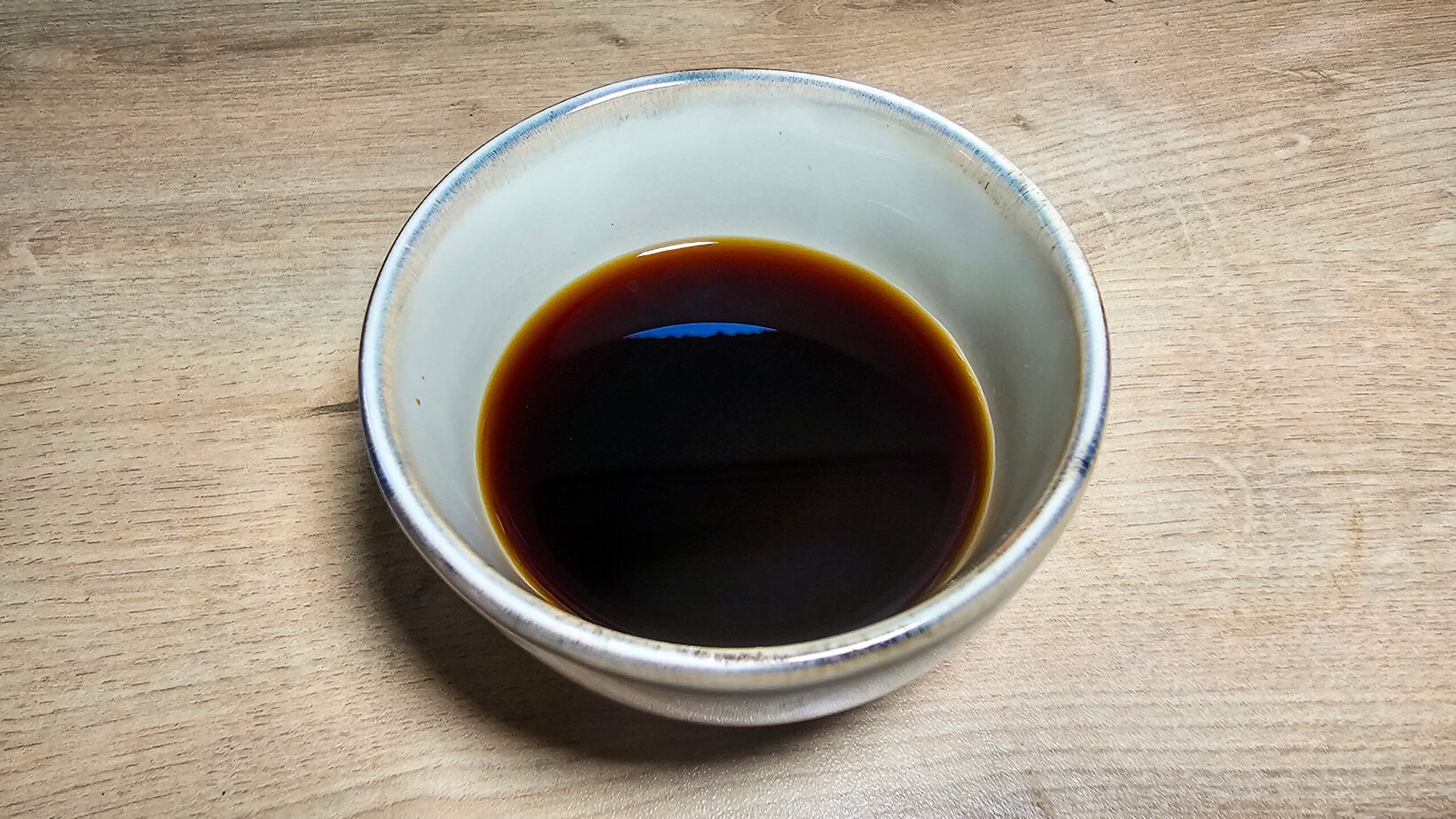
How to Cook Gyoza?
These tasty Japanese dumplings can be cooked in several ways. The traditional method gives gyoza an ultra-crispy bottom and a soft top. But why pan-fry them twice? Is it really necessary? Let us look at the different techniques for preparing these little gems.
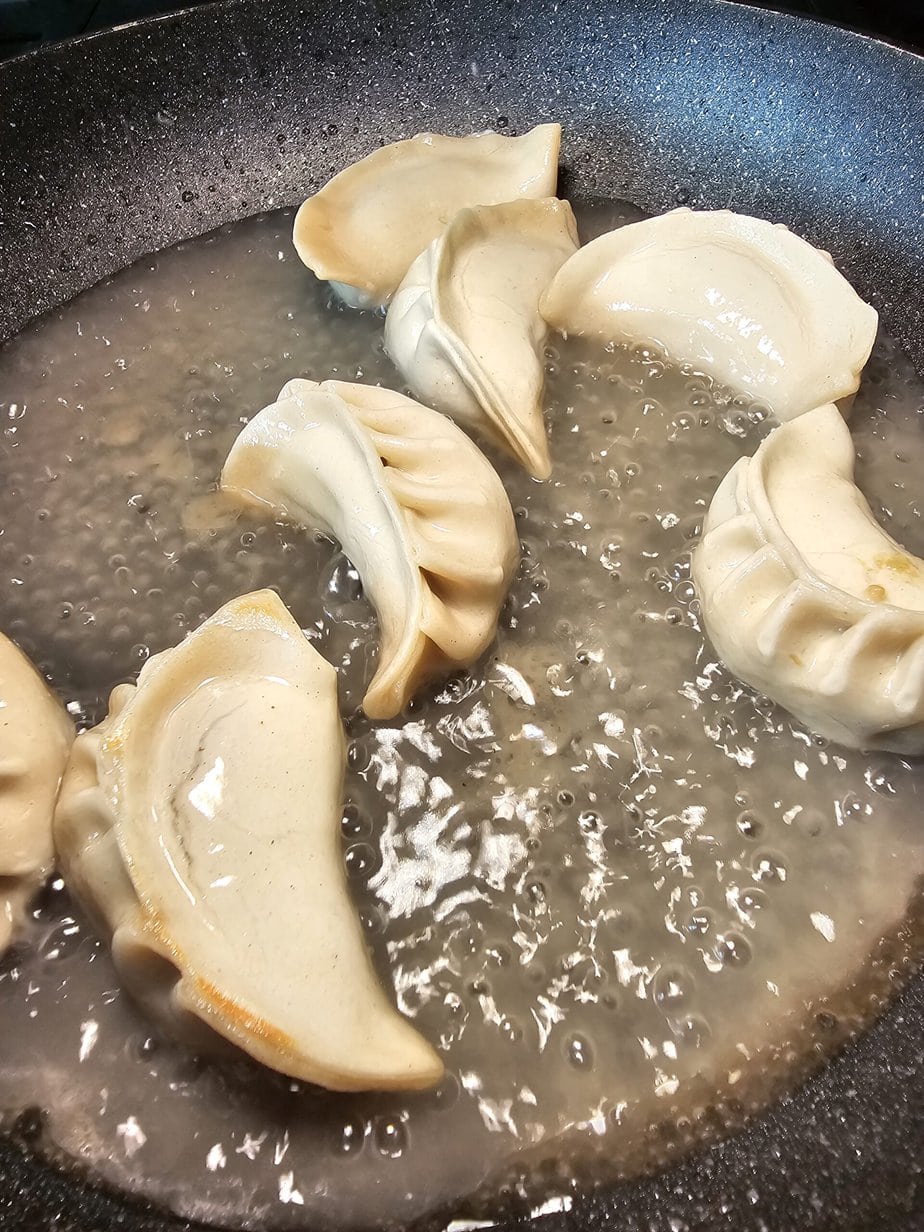
Yaki Gyoza (Pan-Fried Gyoza)
With this method, the gyoza are first seared in a little oil until crisp, then steamed under a lid. This two step process is essential for a truly crunchy bottom. The initial “frying” encourages the wrapper to form micro-bubbles that enlarge the crispy surface.
Sui Gyoza (Steamed or Boiled Gyoza)
In this version, the gyoza are steamed or boiled first; you can then pan fry them to crisp the bottoms.
Although this method gives a decent crunch, it does not create the micro-bubbles that make yaki gyoza exceptionally crispy. You can also slip sui gyoza into a delicious chintan broth, much like a wonton soup.
For steamed gyoza, try dipping them in a blend of soy sauce, rayu sauce, and black rice vinegar

Deep-Fried Gyoza
In this approach, the gyoza are fully deep-fried with no steaming or boiling. The result is dumplings that are crispy all over but missing the textural contrast that defines yaki gyoza.
Is It Worth Making Your Own Gyoza Wrapper?
Yes and no. The advantages of homemade gyoza wrappers over the frozen store-bought kind are a slightly better texture and a lower cost. If you plan to make hundreds of gyoza, the unit price falls sharply when you prepare the dough yourself
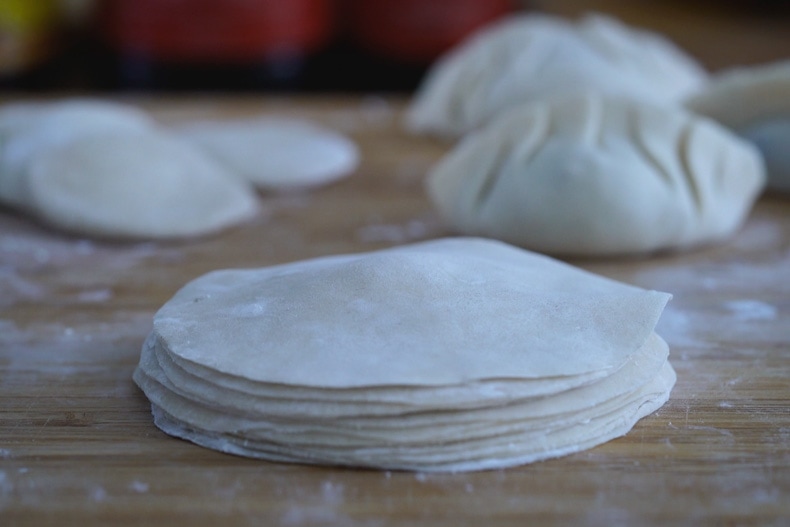
Conversely, choosing frozen gyoza wrappers saves a great deal of time without sacrificing much flavor. To use them, leave them in the fridge for 24 hours before cooking so they can thaw gently

Authentic Japanese Gyoza
Ingredients
- 50 wrappers gyoza wrappers
Filling
- 500 g finely shredded napa cabbage
- 20 g salt
- 500 g ground pork use belly or 30% fat
- 2 g white pepper
- 15 g minced garlic
- 5 g minced fresh ginger
- 60 g chopped Chinese chives substitute with Thai chives or spring onions
- 12 g sugar
Dipping Sauce
- 120 ml rice vinegar
- 60 ml light soy sauce
- 30 ml Japanese chili oil optional
Instructions
- Combine the cabbage and half of the salt in a mixing bowl.
- Let it rest at room temperature for 15 minutes in a fine strainer.
- Squeeze the cabbage in a clean tea towel to remove excess moisture. Press really hard.
- Mix the pork, drained cabbage, remaining salt, white pepper, garlic, ginger, chives and sugar in a large bowl. Knead with your hands as if you were kneading bread dough; the mixture should become very pasty.
- Set up a work station with a small bowl of water, a clean towel, a bowl of gyoza filling, a baking sheet lined with parchment paper and a stack of gyoza wrappers.
- Place a small amount of filling in the centre of each wrapper.
- Moisten the edges of the wrapper with water and seal the dumplings.
- At this stage you can freeze them if you like.
Cooking
- For cooking, heat 15 ml of oil in a frying pan over medium heat.
- Add the gyoza and cook until the bottoms are golden brown.
- Pour in 120 ml of water, cover and steam for 3 minutes.
- Remove the lid and continue cooking until the water has evaporated. Increase the heat if necessary.
- Serve immediately with the sauce.
Sauce
- Stir together the rice vinegar, soy sauce and chili oil.
Notes
Nutrition
Pulled the recipe from seriouseats’ great write-up
